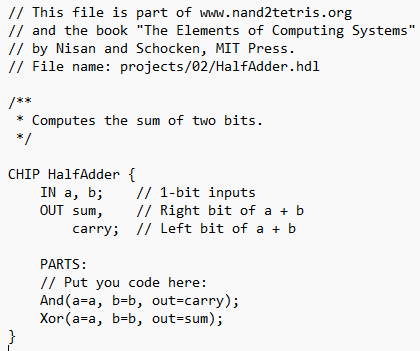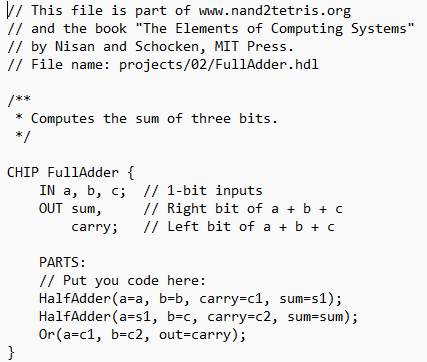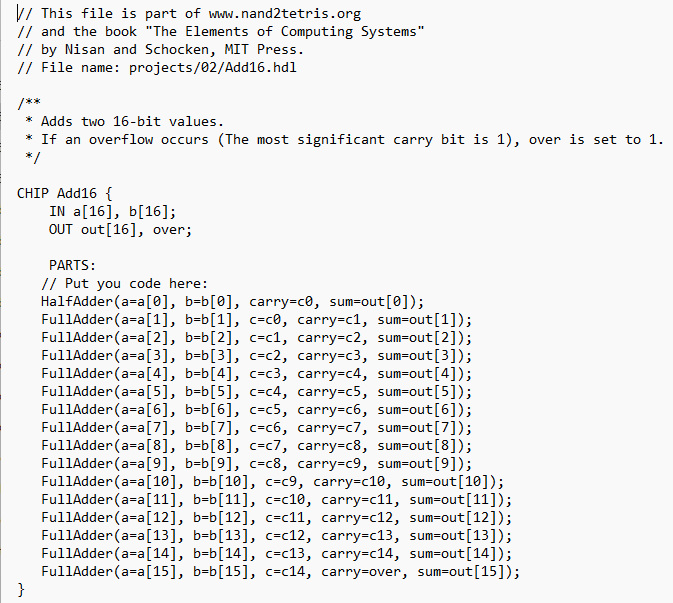Today's LeetCode question was an interesting one—perform addition without using the + or - operator.
At first, I was completely stunned. What kind of question is this? And worse, what if this comes up in an interview? I had a gut feeling it had something to do with bit manipulation, and sure enough, that was the topic tagged in the problem. But I had no clue where to start—I had completely forgotten how adders work in Computer Systems.
Initial Thoughts
Looking through the discussions, I saw some people using
sum([a, b]), which felt almost too straightforward. But I
still wanted to attempt the bit manipulation approach, so I referred
back to my old Computer Systems coursework, where I wrote about
half-adders, full-adders, and 16-bit adders.
Understanding Adders
Here are some relevant images from my previous coursework:
-
Half-adder:

-
Full-adder:

-
16-bit adder:

From these, I recalled that:
xoris used for addition.andis used to determine the carry.- A full-adder is made of two half-adders and an OR gate.
- 16-bit adders are made of 16 full-adders.
With this in mind, I realized the solution must involve repeatedly applying XOR and AND to simulate addition.
Breaking Down the Approach
In Python, working with binary numbers bit by bit was tricky. Using
bin(a) wasn’t the solution, since it converts numbers to
strings.
After some trial and error (and checking the solution page 😅), I found that the approach was actually quite simple:
- Use
xorto add the numbers without carrying. - Use
andto find the carry and shift it left. - Repeat until there are no more carries.
The issue in Python is that numbers can exceed 32 bits, causing the carry to keep shifting indefinitely. To prevent this, we apply a mask to keep the result within a fixed bit size (12 bits in this case).
Final Solution
class Solution:
def getSum(self, a: int, b: int) -> int:
# Perform addition using XOR and recursively shift the carry
mask = 0b111111111111 # 12-bit mask (sufficient for range -1000 to 1000)
MAX = 0b011111111111 # Max positive number within 12 bits
if b == 0:
return a if a <= MAX else ~(a ^ mask)
return self.getSum((a ^ b) & mask, ((a & b) << 1) & mask)Final Thoughts
Honestly, I can only hope I never get this question in
an interview. But at least now I understand the concept and can explain
it if needed. Or I can just use sum([a, b]) and hope the
interviewer doesn’t mind. 😆
Until next time!